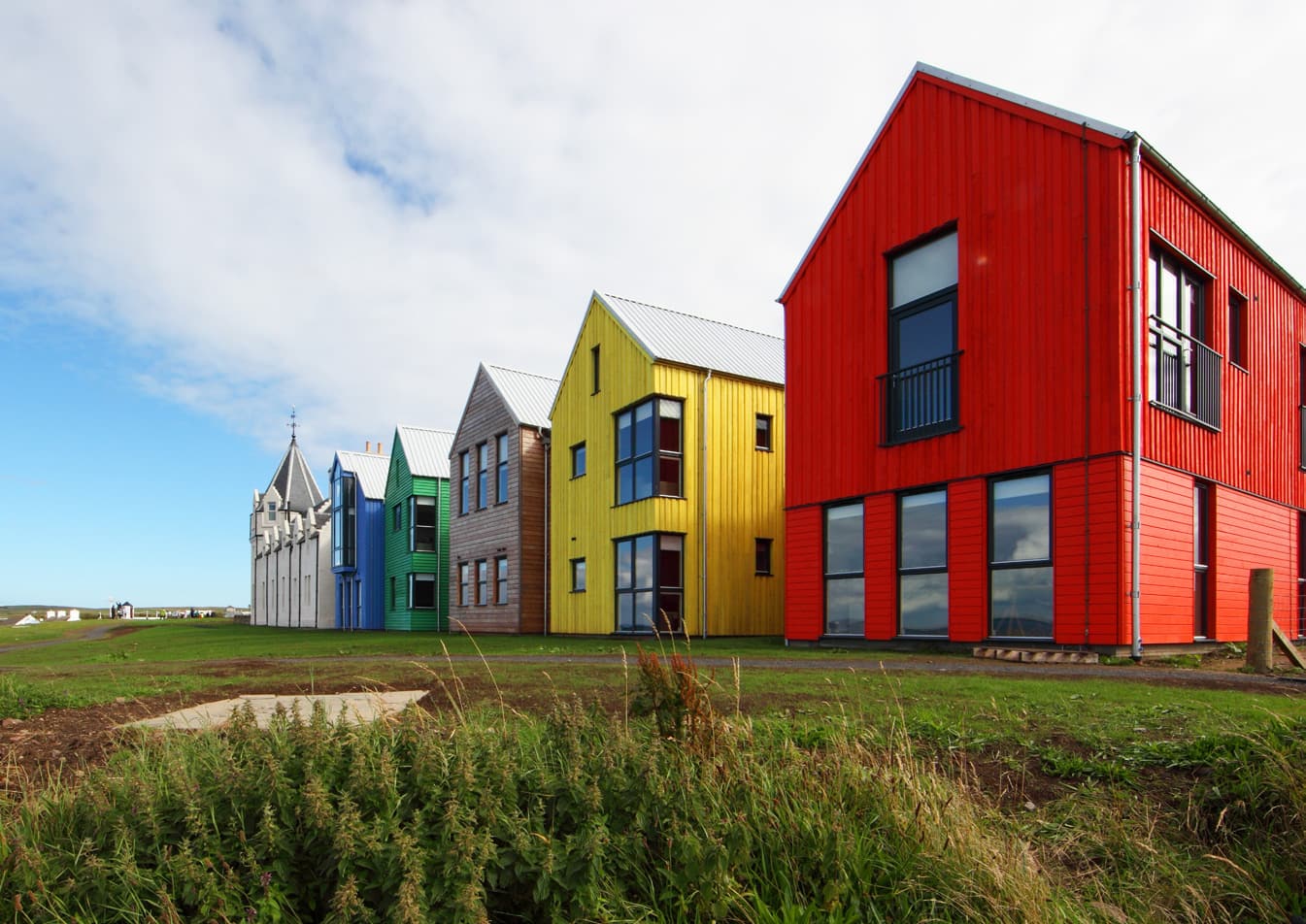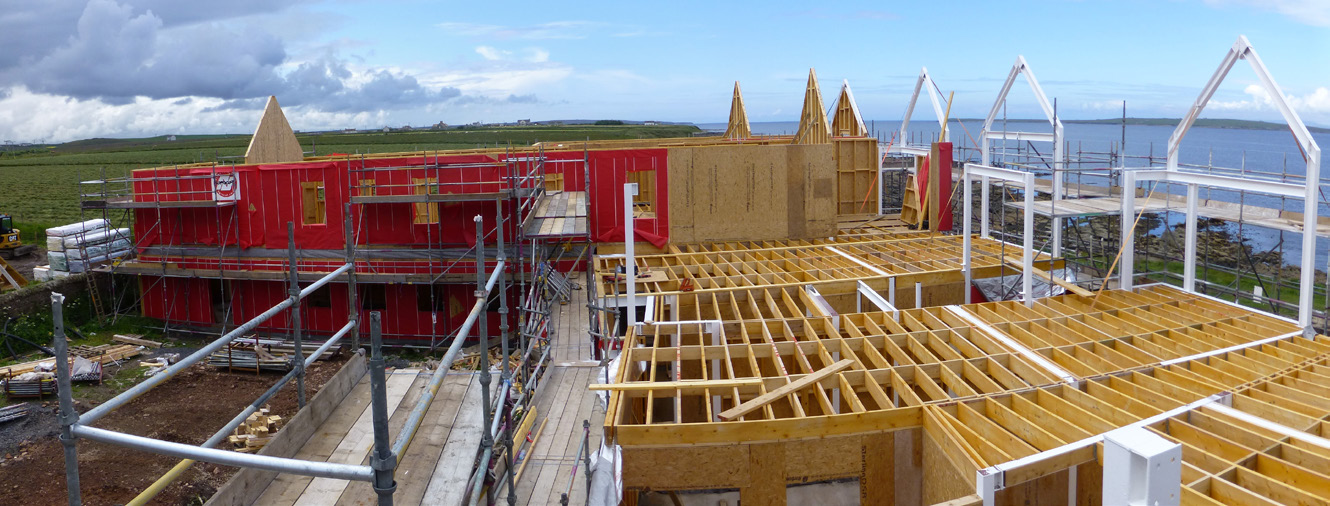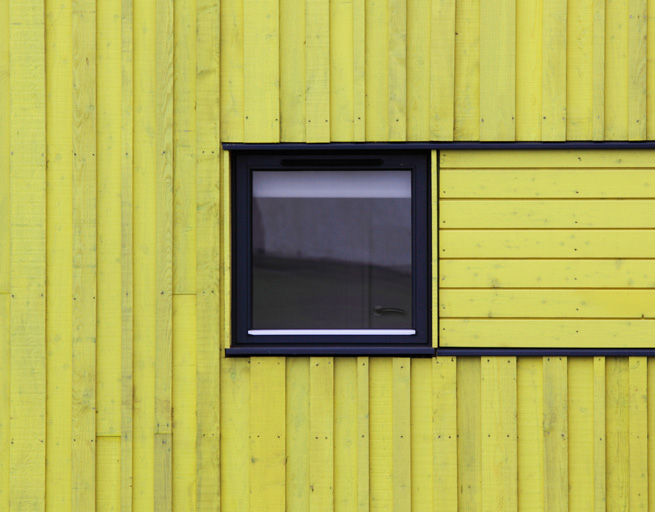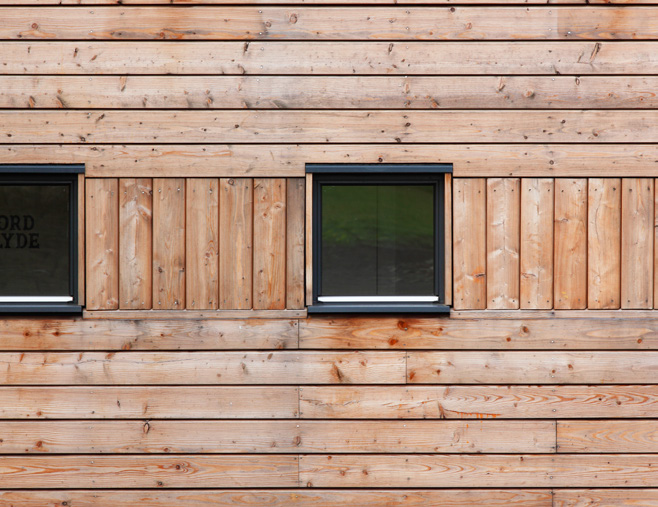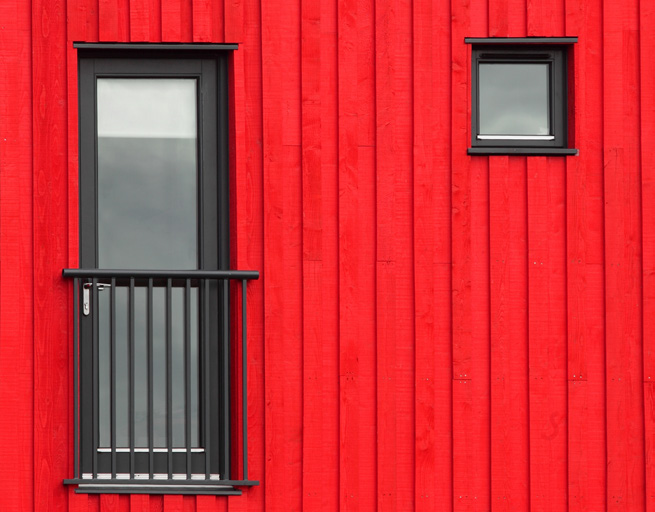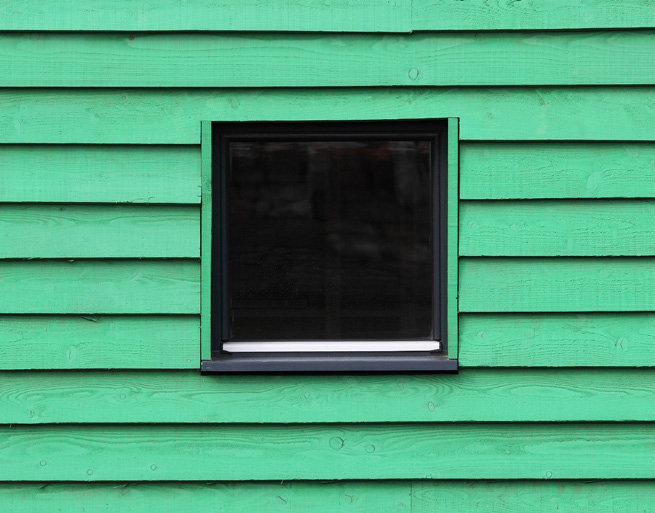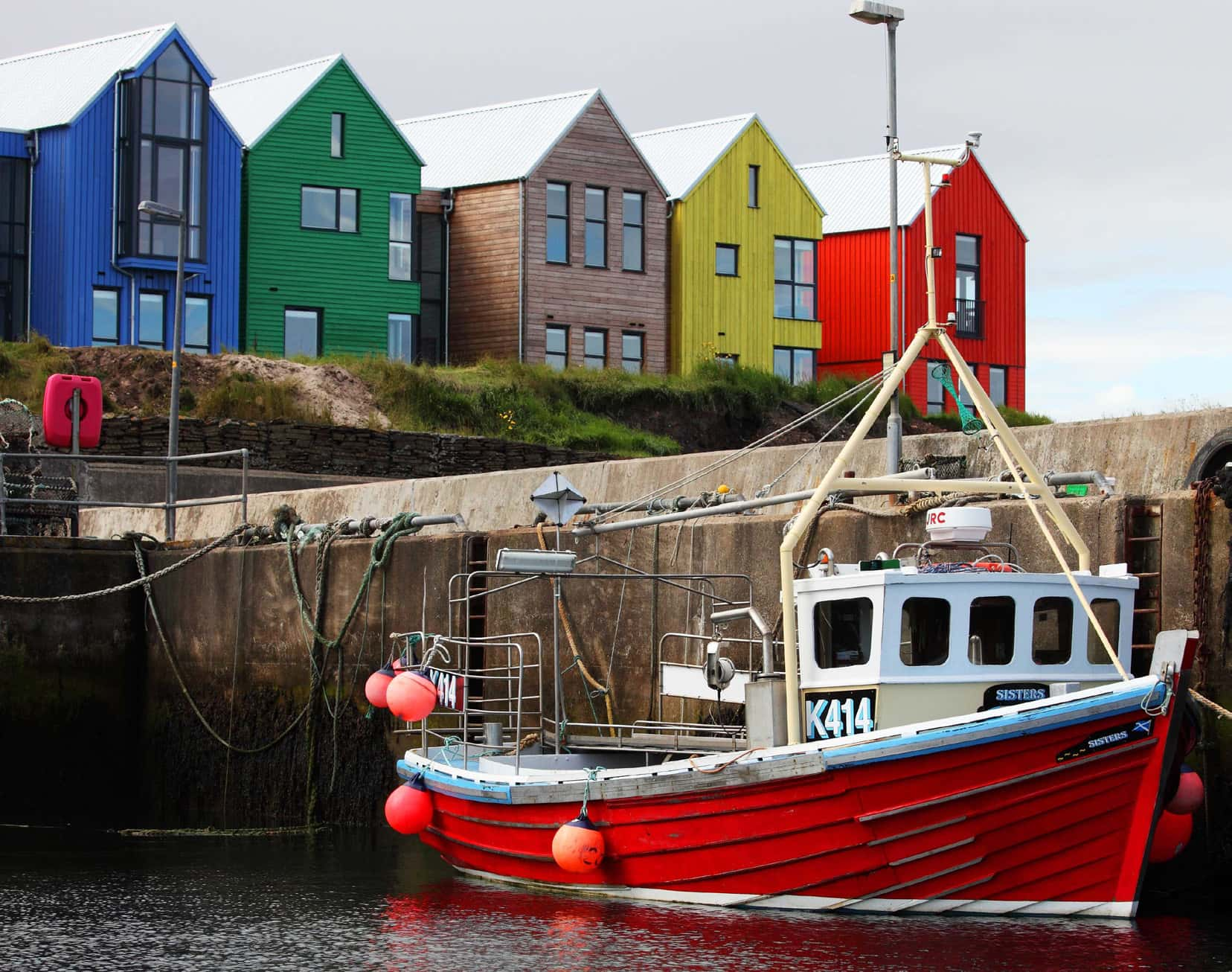John O’ Groats and its dilapidated eyesore of a hotel narrowly missed receiving the 2010 Carbuncle Award. From this inauspicious position, the client’s brief was to design a building that would establish John O’ Groats as a desirable destination.
The design of the inn responds to its harbourfront location with a street frontage of brightly coloured gables, in contrast with the stark white restored Victorian hotel. Inspiration came from Scandinavian fishing villages and traditional British beach huts. The bold façades provide a welcome splash of colour in a sometimes bleak landscape.
The building is an evolution of the ‘aparthotel’ concept. It uses arrangements of locking doors that allow variable configurations: studios, one-to-four-bedroom apartments and separate hotel-style rooms.
The fenestration provides different framed views from each apartment. These include dramatic sea views from the living spaces, quieter inland views from the bedrooms, and angled glimpses framed in small, square openings. Bedrooms are intentionally compact to give priority to dramatic kitchen and living spaces with high vaulted ceilings.
In addition to the locally sourced timber cladding, local materials and references are used throughout the interior. These include lobster creel light fittings, wool fabric walls by ANTA of Tain, and local poetry hand painted on the risers of the stairs.
Timber technologies
The new build element of the inn is a highly insulated timber frame with timber cladding. Timber was chosen because of the client’s requirements for sustainability, the tight budget and programme, and the conceptual references to Scandinavian fishing villages.
Various construction methods were considered, including closed panel systems and structural insulated panel systems. Traditional timber frame construction proved to be most economical. It allowed for the use of a timber kit manufacturer 15 miles from site, and small local contractors for installation.
The timber selected for the cladding was Scottish larch from Russwood. This is locally sourced, durable and economical. Although other timbers are more durable, the local source was considered highly important by the client and the expected lifetime was considered acceptable.
Timber-related features
The timber selected for the cladding was Scottish larch as it was locally sourced, durable and economical. The paint was vacuum applied in the factory to achieve the most durable finish for an exposed location.
Several cladding patterns were also used in a variety of width combinations including shiplap, square edged and open rainscreen. Each pattern required custom detailing for openings and corners and for junctions between the different cladding patterns. These were developed in consultation with Russwood’s technical expertise to allow for movement and adequate ventilation.
A library of sustainable building materials
Our website includes a web-based resource that showcases sustainable, traditional, innovative, recycled and low carbon building materials. If you are looking for inspiration or information on different types of materials to consider for your project, visit our materials library.

